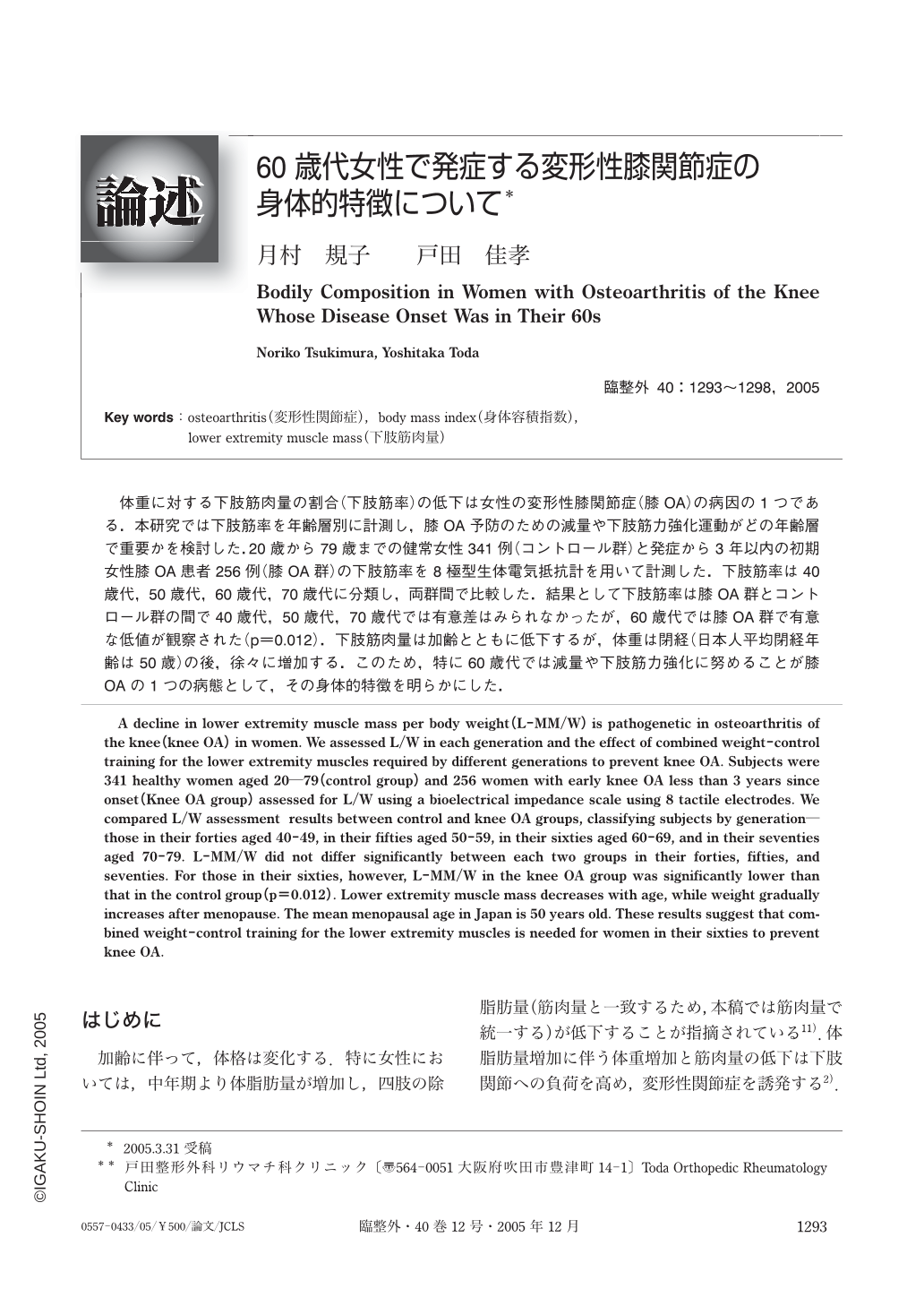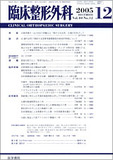Japanese
English
- 有料閲覧
- Abstract 文献概要
- 1ページ目 Look Inside
体重に対する下肢筋肉量の割合(下肢筋率)の低下は女性の変形性膝関節症(膝OA)の病因の1つである.本研究では下肢筋率を年齢層別に計測し,膝OA予防のための減量や下肢筋力強化運動がどの年齢層で重要かを検討した.20歳から79歳までの健常女性341例(コントロール群)と発症から3年以内の初期女性膝OA患者256例(膝OA群)の下肢筋率を8極型生体電気抵抗計を用いて計測した.下肢筋率は40歳代,50歳代,60歳代,70歳代に分類し,両群間で比較した.結果として下肢筋率は膝OA群とコントロール群の間で40歳代,50歳代,70歳代では有意差はみられなかったが,60歳代では膝OA群で有意な低値が観察された(p=0.012).下肢筋肉量は加齢とともに低下するが,体重は閉経(日本人平均閉経年齢は50歳)の後,徐々に増加する.このため,特に60歳代では減量や下肢筋力強化に努めることが膝OAの1つの病態として,その身体的特徴を明らかにした.
A decline in lower extremity muscle mass per body weight (L-MM/W) is pathogenetic in osteoarthritis of the knee (knee OA) in women. We assessed L/W in each generation and the effect of combined weight-control training for the lower extremity muscles required by different generations to prevent knee OA. Subjects were 341 healthy women aged 20―79 (control group) and 256 women with early knee OA less than 3 years since onset (Knee OA group) assessed for L/W using a bioelectrical impedance scale using 8 tactile electrodes. We compared L/W assessment results between control and knee OA groups, classifying subjects by generation―those in their forties aged 40-49, in their fifties aged 50-59, in their sixties aged 60-69, and in their seventies aged 70-79. L-MM/W did not differ significantly between each two groups in their forties, fifties, and seventies. For those in their sixties, however, L-MM/W in the knee OA group was significantly lower than that in the control group (p=0.012). Lower extremity muscle mass decreases with age, while weight gradually increases after menopause. The mean menopausal age in Japan is 50 years old. These results suggest that combined weight-control training for the lower extremity muscles is needed for women in their sixties to prevent knee OA.

Copyright © 2005, Igaku-Shoin Ltd. All rights reserved.


